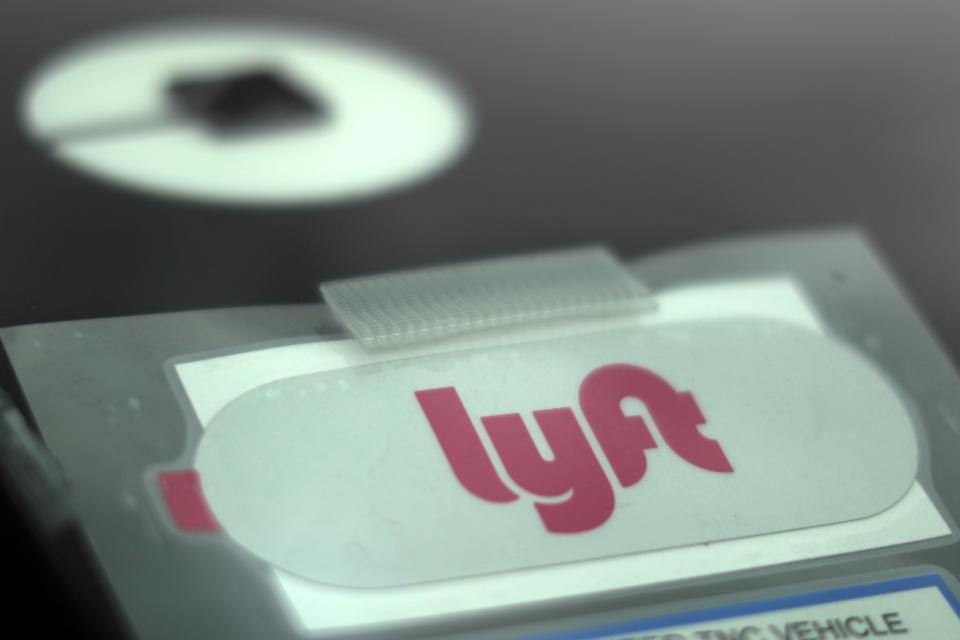Lyft tops expectations in Q2 results, raises full-year guidance
Lyft (LYFT) reported second-quarter results that topped consensus expectations as the company attracted more riders to the platform and narrowed its losses.
Here were the main numbers from the report, compared to Bloomberg-compiled estimates:
Revenue: $867.3 million, vs. $809.35 million expected
Adj. loss: 68 cents per share, vs. $1.00 per share expected
Active riders: 21.81 million, vs. 21.34 million expected
Revenue per active rider: $39.77, vs. $32.67 Y/Y
The San Francisco, California-based ride-hailing company also raised guidance to see full-year revenue of as much as $3.5 billion, from as much as $3.3 billion seen previously.
“Lyft’s second quarter was marked by strong execution and important advances in our product and platform. This translated to record revenue driven by better than expected Active Rider growth and Revenue per Active Rider monetization,” Logan Green, co-founder and chief executive officer of Lyft, said in a statement.
During a call with investors Wednesday, Green called this “a milestone quarter on our path to profitability.”
Shares of Lyft jumped as much as 13.29% to $68.30 during extended trading. However, the stock pared gains after the company reported in a subsequent filing that its IPO lock-up period would be ending earlier than previously scheduled.
Lyft’s report Wednesday marks its second as a public company, and follows a crushing couple of months for the stock since its initial public offering in March. Shares closed at $60.29 each, down 16% from its IPO pricing, and had been trending lower for months as investors lamented the company’s steep losses and ongoing competition to capture market share from peer ride-hailing giant Uber (UBER).
But in its second-quarter report, Lyft unexpectedly guided toward narrower losses for the full year. Lyft now expects adjusted EBITDA losses – which excludes debt, interest and some other items – will be as much as $875 million, a decrease of $300 million from previous guidance. While Lyft’s management previously said in May 2019 would be its “peak loss year,” the new guidance suggests a narrower loss than Lyft posted during fiscal 2018.
“It turns out last year was likely to be peak loss in terms of adjusted EBITDA,” Green said during Wednesday’s call.

“We remain focused on reshaping transportation and we are pleased with the continued improvement in market conditions. This environment along with our execution is translating to strong revenue growth and sales and marketing efficiencies,” Green said. “As a result of this positive momentum, we anticipate 2019 losses to be better than previously expected and we are pleased to have updated our outlook.”
Last quarter, Lyft offered a sliver of hope to investors by signaling that the ride-sharing industry was becoming “increasingly rational,” implying a de-escalation of pricing wars with Uber, and the prospect of higher profit-boosting rider prices. Likewise, Uber’s management said during the company’s last earnings call that rider subsidies and promotions would decrease during the second quarter, suggesting fewer incentives were needed to attract riders onto the platforms.
Lyft’s second-quarter results on active rider numbers and revenue per active rider suggest these expectations have begun to be realized. Active riders in the quarter jumped 41% over last year, while revenue per active rider increased 22%. Lyft said Wednesday that price increases could further boost revenue per rider in both the third and fourth quarters.
However, Lyft has also contended with a series of setbacks during the second quarter.
Last month, Lyft confirmed that its COO Jon McNeil was leaving the company after just over a year-long tenure. The company also faces the possibility of having its drivers be reclassified as employees rather than as contractors by way of a new piece of California legislation, which would cut further into company margins. And outside of its core ride-sharing business, the company recently pulled 1,000 electric bicycles off the streets of San Francisco following reports that some of its bikes had caught fire.
Peer ride-sharing company Uber is set to results quarterly earnings results after market close Thursday.
—
Emily McCormick is a reporter for Yahoo Finance. Follow her on Twitter: @emily_mcck
Read more from Emily:
Economy adds 164,000 jobs in July, unemployment rate sits at 3.7%
Netflix’s 2Q global paid subscriber additions miss expectations
Tech companies like Lyft want your money – not ‘your opinion’
Follow Yahoo Finance on Twitter, Facebook, Instagram, Flipboard, LinkedIn, and reddit.
Read the latest financial and business news from Yahoo Finance

